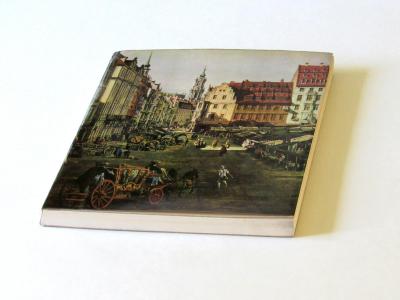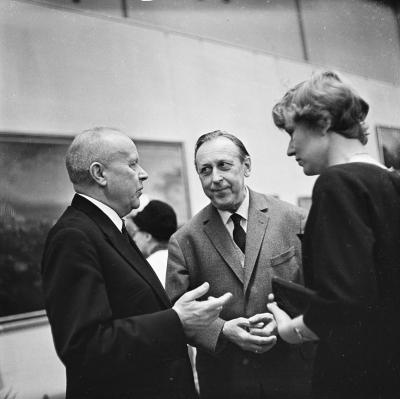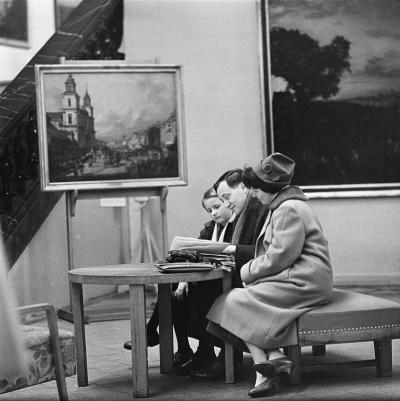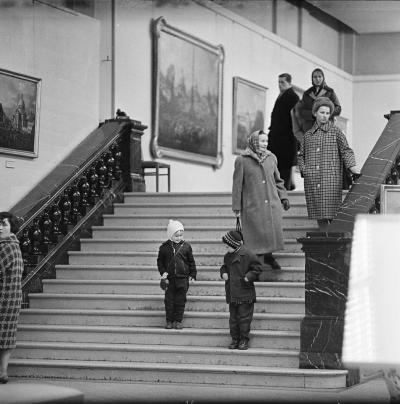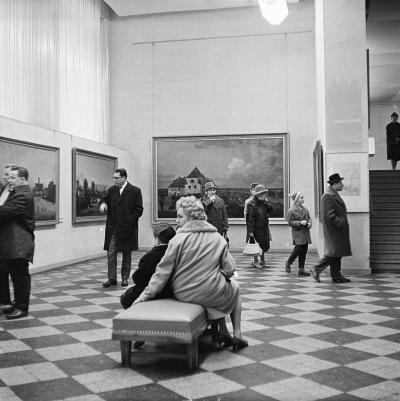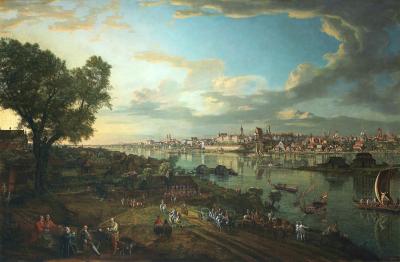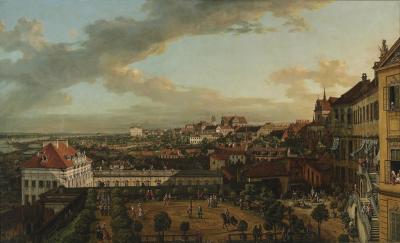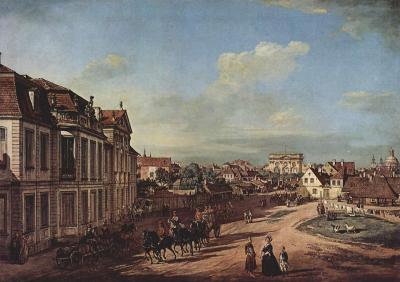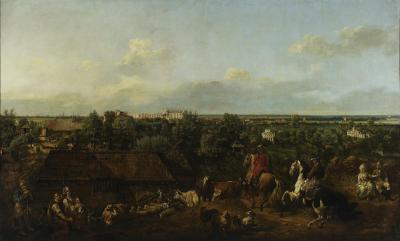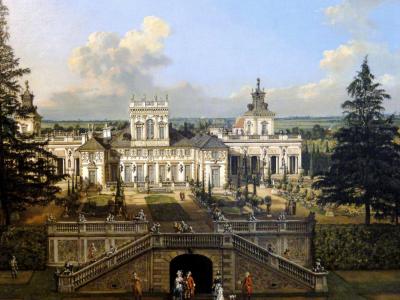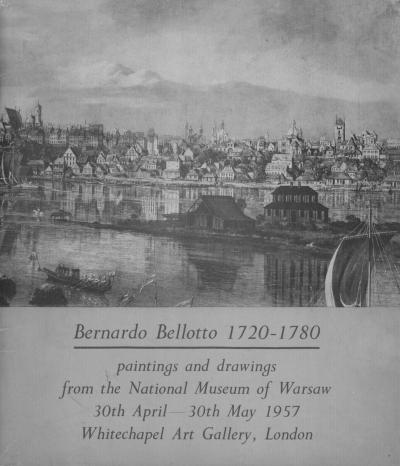The German-Polish Canaletto Exhibition in Dresden, Warsaw and Essen 1963-1966
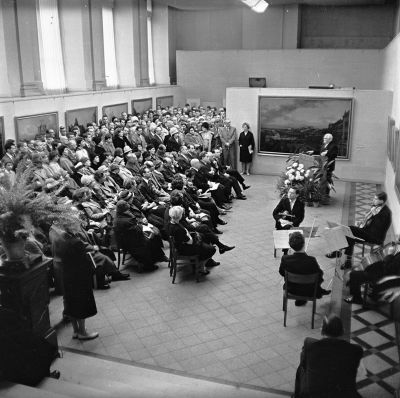
The Treaty of Zgorzelec (Görlitz) on 6th July 1950 fixed the border between the GDR and Poland along the Oder-Neiße Line. Now that the eastern areas of Germany were clearly lost forever-this fuelled suppressed – because forbidden – vindictive attitudes amongst much of the East German population. For this reason neither the political leadership nor the people of Poland felt able to trust the immutability of the border demarcation. Following the Poznan workers uprising in Poland in June 1956 Władysław Gomułka, the newly elected head of the Polish United Workers’ Party (PVAP), began a process of liberalisation in cultural and religious areas and did away with the forced collectivisation of agriculture. These measures caused the Chairman of the Central Committee of the SED, Walter Ulbricht to fear that demands for such reforms would also bleed into the GDR. The Oder-Neiße border was one of the most heavily guarded boundaries in Europe. The Poles considered that “any attempt to change it“ would be tantamount to a “call for war”.[1] Polish citizens who needed a visa to cross the border were reminded of the Nazi era by the harsh military tones of the East German border guards and the cut of their uniforms. The annual “friendship meetings“ in which German and Polish party functionaries met up to celebrate the anniversary of the Treaty of Zgorzelec and invoke the “peace border” failed to hide the fact that there were “very few contacts between the leadership in East Berlin and Warsaw”.[2]
Thus, according to Tadeusz Galiński, the Minister of Art and Culture in the People’s Republic of Poland, the Canaletto exhibition – jointly prepared by staff of the National Museum in Warsaw and the State Art Collections in Dresden – which opened on Sunday 8th December 1963 in the Dresden Albertinum “played an important role in the neighbourly cooperation between both countries, because it helped the people on both sides of the border to get to know each other better”, as he wrote in a preface to the exhibition catalogue. Hans Bentzien, the Minister of Culture in the German Democratic Republic referred to a “vibrant exchange of culture […] in the course of the last few years […] However never before has such a major exhibition been jointly prepared and presented by both countries.”
In 1747 the Venetian painter Bernardo Bellotto was only 25 when he was appointed Court Artist by King August III of Poland, who was also the Elector of Saxony Prince Friedrich August II. Consequently Bellotto painted a huge number of views of Dresden and Pirna for him. After the death of the Prince in 1763, the artist who now called himself Canaletto after his mother’s maiden name, moved to the court of Stanislaw II (Stanislav August Poniatowski), who was elected King of Poland in1764. Here Canaletto was commissioned to paint twenty-five views of Warsaw. But there were also common factors in more recent history: according to Hans Bentzien, the paintings in Warsaw were “highly endangered by the invasion of the Hitler fascists and were only saved from the flames of the burning palace by the personal efforts of museum staff, whereas in Dresden at the end of the war in May 1945 the artworks were rescued from extinction by special fighting units of the victorious Soviet army.” Galiński added: “Furthermore they have a major documentary value for Warsaw because they provided a blueprint for the reconstruction and repair of precious historical buildings in the old city districts. Thus works which bear witness to our national tradition which the Hitler fascists would have destroyed, have been saved for posterity.”
Immediately after the end of the war thirteen of a total of thirty-five Canaletto’s Dresden pictures were removed to Moscow along with the stocks of the Dresden Painting Gallery. In 1955 they were returned to the German Democratic Republic. Those paintings which remained in Dresden after the war were presented in Pillnitz Castle in 1946. The German/Polish Canaletto exhibition in 1963 was the first occasion when the complete Dresden stocks were united.[3] After the uprising against Russian rule in Warsaw was put down in 1831 the paintings in the Warsaw State Palace were removed to Russia and distributed amongst the palaces on the orders of the Czar. In 1922 they were returned to Poland by the Soviet government and could once again be seen in the Warsaw State Palace.[4] Thus a large part of the works shown in the Dresden exhibition in 1963 had served as spoils of war or for other political ends in the past.
The Polish side of the Dresden Canaletto exhibition was prepared by Stefan Kozakiewicz, the curator of the Warsaw National Museum. In 1972 he published the first comprehensive critical examination of the complete works of Bellotto. It was published in Recklinghausen in two volumes comprising more than 500 pages and 800 illustrations. In Dresden the exhibition was organised by the director of the Painting Gallery, Henner Menz, assisted by Waltraut Schumann. The exhibition comprised 31 paintings and 61 drawings from the National Museum in Warsaw and the Silesian Museum in Breslau/Wrocław, 35 paintings from the Gallery of Old Masters in the Dresden State Art Collection, as well as two vedutas from the collection of the State Palaces and gardens in Wörlitz. The 234-page catalogue with articles by all the participating specialists and 131 full-page black-and-white illustrations set and printed by the Otto Grotewohl Trade Vocational School in Leipzig, was selected as one of the finest books of the year in which it appeared.
